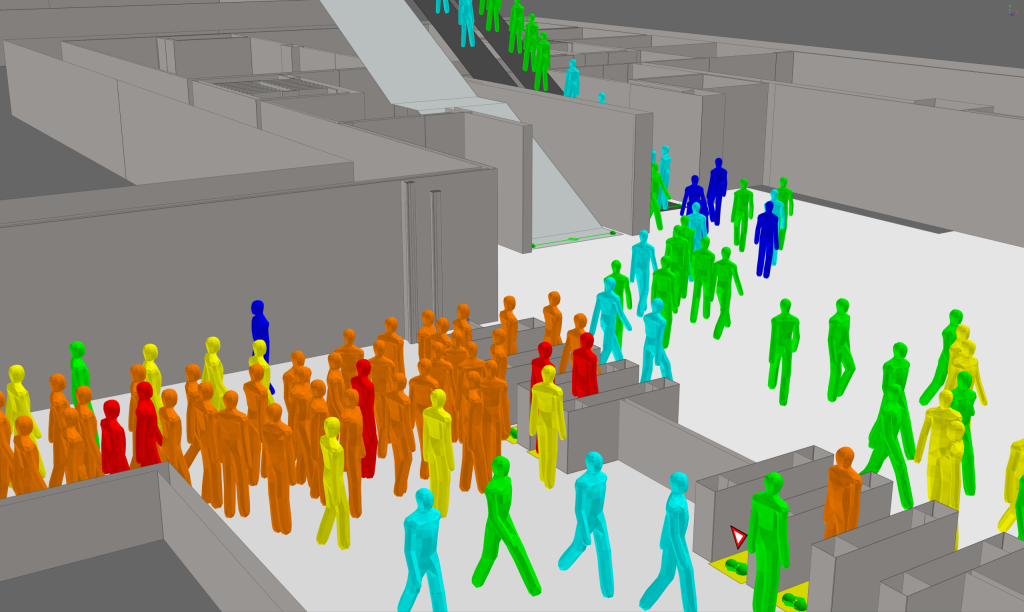Designing a new city can be a challenge, but with a rise in new technology and software — the process is becoming easier. Together with Oasys Ltd, who provide column design software, we consider how software has been used in the planning process of city spaces.
Using software to manage crowd movement
It is capable of simulating thousands of people so that they can be imported into digital models of city spaces. The simulated agents can act intelligently according to set guidelines.
There are different ways that this software can be used on projects. For architects designing a new building or arena that has the potential to host thousands of people, this technology can be used to simulate an evacuation. The crowd can be monitored to see what collisions they come across and how well they can achieve the goal of escaping the building.
This software can help prepare for all kinds of emergencies, whether this is in hospitals or populated transport hubs. With the rise of terror incidents across Europe, the use of crowd simulation and preparing for unlikely situations is more important than ever.
Geographic information system (GIS) and its usage
Essentially, GIS is a computer system that has the ability to capture geographical data from a wide variety of sources and manipulate it to encourage better productivity within a project.
Multilayer mapping is one benefit of working with a GIS. Similar to a density map, this feature allows the user to see a range of measures on one area. For example, potential agricultural land, areas which are prone to flooding and erodible land can all be visible on one map. This allows urban planners to visualise areas that would not be suitable for building on.
Those who are working in the planning stage of a project will be able to see whether permits have been granted, which will allow them to make more informative decisions within the project. The success of potential businesses can be analysed too by measuring their proximity to potential competitors and customers.
The advantages of building information modelling (BIM) technology
BIM allows planners to create a visual of proposed buildings on sites that they would be building on. This technology is becoming more important in the design of ‘smart cities’, to test out the impact of the building before construction goes ahead.
Those projects that are likely to happen within an established zone is likely to encounter problems. However, BIM can inform system managers of a wide range of factors. For example, the software could show how deep to dig in order to not crash into a fibre optic cable.
Using BIM can create a collaborative project with designers from other areas of the planning process too. For example, workers on drainage construction and landscaping can consult the same model to help better inform their decisions.
Solutions Executive of Asset Management at Bentley systems, Tony Andrews, commented: “Some of the drilling that we did for this project was within centimeters of the existing underground tunnels in London. It was absolutely incredible”.
One step closer
With new technologies coming into play, such as crowd simulation, the way we plan projects is changing. One of these, not used for urban planning yet, is an open-source software that has been developed in New York. It is currently a system that creates a map using data to visualise how people move through cities. Heat spots on the map become more intense when areas are popular.
From this technology, we are able to see who is occupying our city spaces. At the moment, the data is collected from Flickr and Twitter uploads, and this is planned to expand to other social networks.
With real time viewing, we can look to see which city spaces are populated — going down to the specifics of location. It will also be possible to make comparisons between cities and replicate planning of structures if it has been successful in a city that runs in the same way.
Sources
https://www.geospatialworld.net/article/building-smart-cities-with-bim/
http://gis.usc.edu/blog/why-is-gis-important-in-urban-planning/
https://www.curbed.com/2017/9/22/16350214/urban-pulse-planning-design-cities-nyu
https://www.gim-international.com/content/article/benefits-of-gis-in-urban-planning


